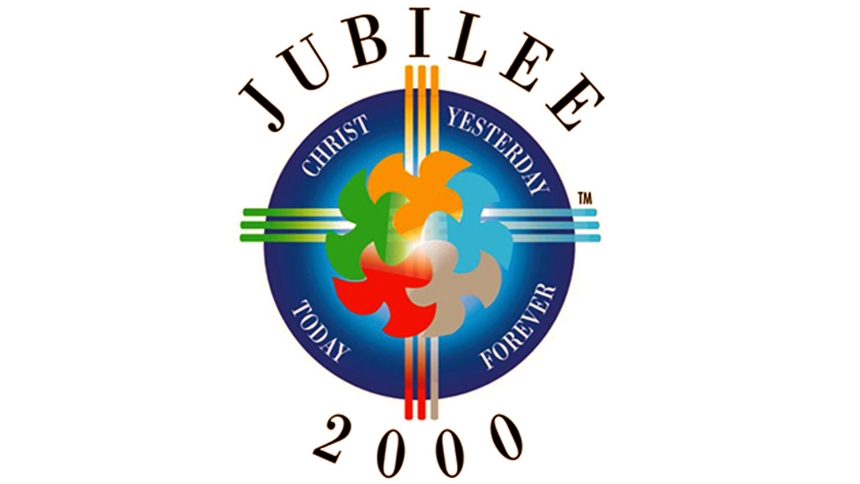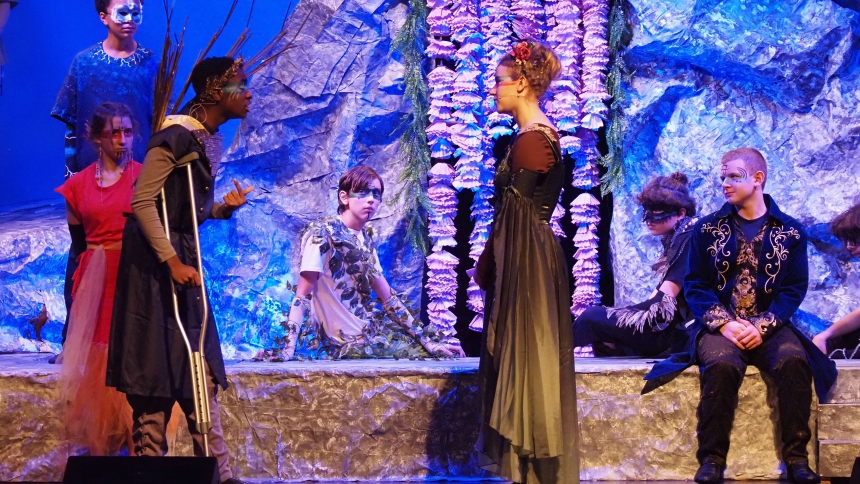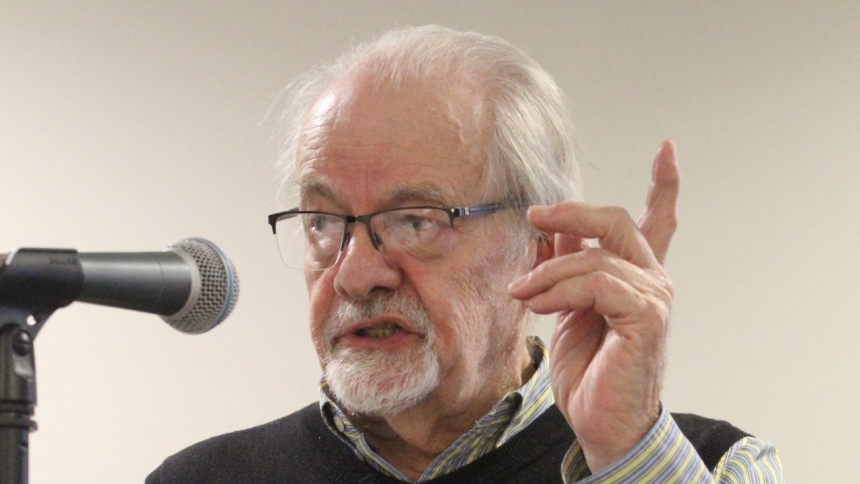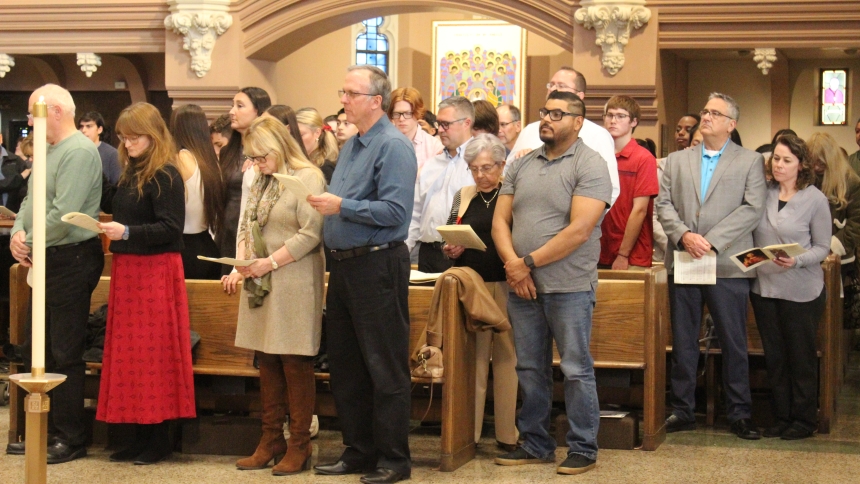
Faith as a journey replete with joy, sorrow, perseverance and mercy are themes illuminated in Sacred Scripture. That movement and the crossing of thresholds of hope and salvation are illustrated by the Catholic Church in preaching and in celebrations such as Jubilee Years.
Integral to Holy Years in the Catholic Church are Holy Doors, which represent a passage to salvation. These gates have typically been designated as entranceways at Rome’s four major basilicas.
Holy Years or Jubilees have formally been celebrated dating back to 1300, when Pope Boniface VIII inaugurated the tradition. These special times were held every 33 years, honoring the duration of Jesus’ earthly life. On Christmas 1499, Pope Alexander VI made the door opening a major pilgrimage draw that has continued into modern times.
Posted at St. Peter’s Basilica, a sign explains that the Holy Door represents, “Jesus, the Good Shepherd and the gate of the sheep pen. ‘I am the gate. Whoever enters through me will be safe. He will go in and out and find pasture.’ (John 10:9)” Further, it shows that “God’s mercy reaches out to mankind’s frailty.”
Many of today’s faithful may recall the preparation for the Iubilaeum A.D. 2000, or Great Jubilee celebrated in 2000. That year included more than the world’s fascination with technology and potential Y2K disruptions, as the Church, led by Pope John Paul II, addressed spiritual readiness for the commemoration of 2,000 years since the time of Christ.
The Polish pontiff made an expressed goal of his papacy to journey with the faithful into the 21st century. In 1994, he issued the Apostolic Letter Tertio Millennio Adveniente (As the Third Millennium Approaches). He wished that Christians would begin, by 1997, to take a year each to meditate on the persons of the Holy Trinity.
One of the millions of faithful who followed St. John Paul’s lead was, in late 1999, a newly-ordained priest of the Archdiocese of Detroit, Father Robert J. McClory. Now Bishop McClory, he was studying toward his licentiate of Canon Law in Rome.
The bishop recalled that there was a buzz about the city, with many Italians looking at the faith aspects of turning the clocks to a new century and millennium.
“Pope St. John Paul II led the entire church to anticipate the Jubilee Year with an act of repentance, and years dedicated to the Father and the Son and Holy Spirit,” Bishop McClory said.
Highly anticipated around the Eternal City were events at the basilicas, especially St. Peter’s Basilica.
“Having studied in Rome now for my fifth year, I was finally able to return home for Christmas. However, because we were all anticipating the opening of the Holy Door, I decided to make my Christmas ‘Rome and at home’,” explained the bishop. “I was vested as a priest to help distribute communion at that beautiful opening midnight Mass on Christmas (1999) at St. Peter’s Basilica and (was) present when the Holy Door was opened.”
Bishop McClory said he will not soon forget the amazing feeling and imagery of those days. “To see the heroic and physically weakened saint-pope walk through the door was stunning. I was not close when it occurred, but the photographic images are still seared in my memory, and I often see photos of this event in various church settings.”
The first-year priest said he was happy to then board an early-morning flight to the U.S., where he was able to celebrate Christmas with family and friends for the first time since 1994.
Our Lady of Grace pastor and diocesan vicar for canonical services and judicial vicar Father Brian Chadwick also made memories at the historic events in Rome in 1999, including the midnight Mass presided over by Pope St. John Paul II. He was among the thousands gathered near the overflowing colonnade of St. Peter’s Square.
Saying that his family did not travel much, he found it a blessing to be able to study theology at the Pontifical North American College in Rome. “Bishop (Dale J.) Melczek asked me if I wanted to study there, as Bishop (Andrew J.) Grutka had left money in his will for students to study there,” Father Chadwick explained.
At the college he got to know then-Father McClory, “who was two years ahead of me.”
About six months before he was ordained to the transitional diaconate, seminarian Chadwick got to be at the spiritual center of the world at the official launch of the Great Jubilee.
“At the time it was hard to think that it was a once-in-a-2,000-year opportunity. But the image of Pope John Paul II walking the (Book of) Gospels through the doors was powerful. It speaks to the power of the Gospel, ‘take the Gospel with you where you go.’”
For those aspiring to travel to Vatican City, Father Chadwick advises people to plan well, and when in Rome, try to be in the moment so as to appreciate the sacred sites.
“Try to enjoy and take it all in and be aware,” Father Chadwick.
No matter one’s surroundings, there is advice he recalled from a rector in Rome, “Take a look around to see where you’re at, and, after a week or so, take a look within … find the Lord in prayer in our interior lives.”
Just as Pope Francis has called for the believers to see jubilee celebrations and the holy doors as “paths to a new and eternal life, which were opened to humanity by Jesus,” Bishop McClory hopes local faithful will experience the Lord’s graces.
“My prayer for our diocese is that whether one can go to Rome or not, we will all experience that sense of joy and celebration in the Lord,” Bishop McClory said. “We have so many opportunities for people to make pilgrimages within our own diocese that I hope and pray the Jubilee will permeate all of Northwest Indiana with hope.”



